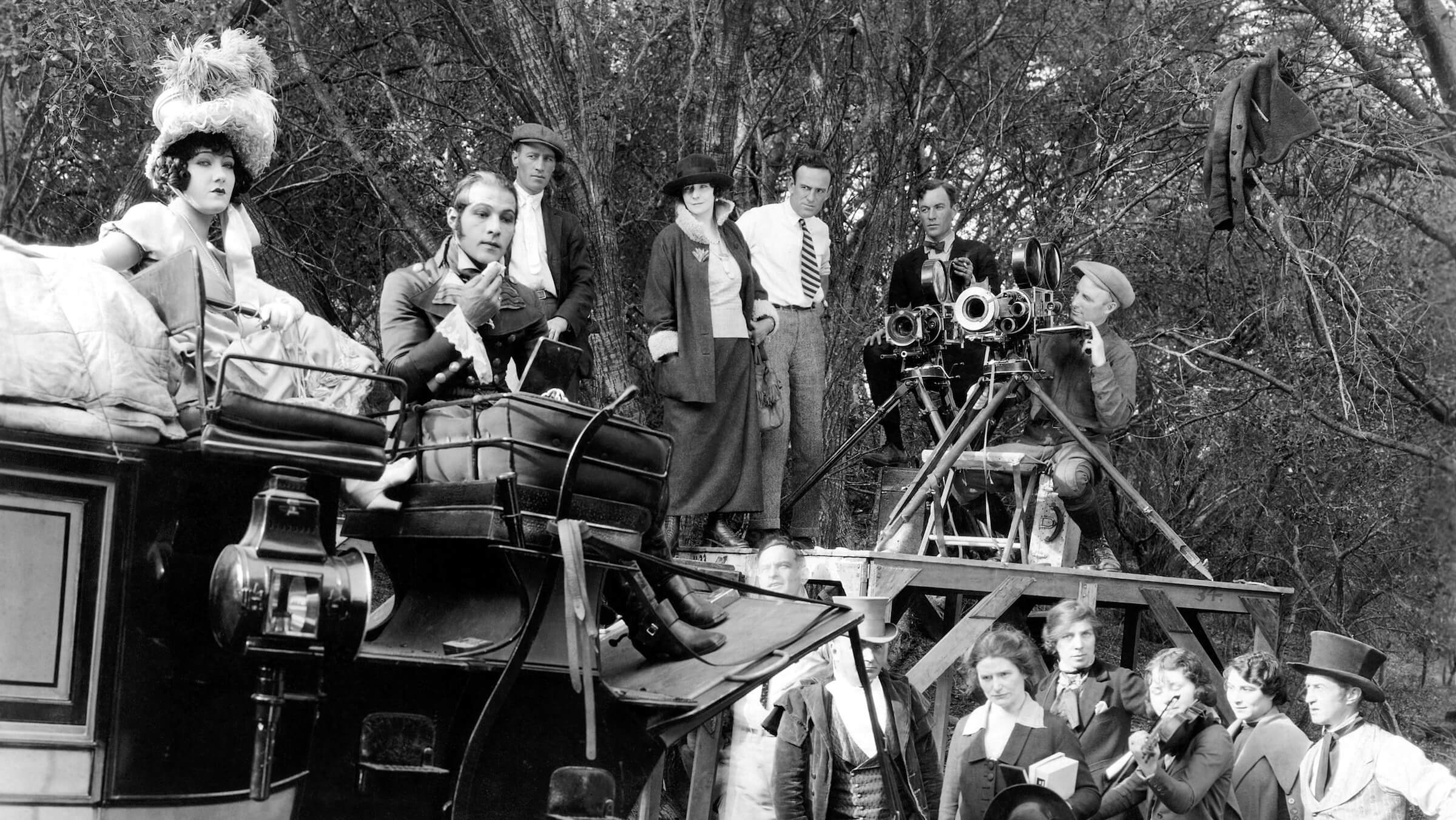This feature was published in conjunction with the screening of Beyond the Rocks at Silent Winter 2005
Gloria Swanson rued the fate of her lost films in her 1980 autobiography, Swanson on Swanson. “The same sad questions are always asked: Does anyone know of a print anywhere of Beyond the Rocks, the film Rudy Valentino made with me in 1921? I would love to see [it] again and know [it is] not lost forever. That, after all was supposed to be the great virtue of pictures—that they would last forever.”
Sadly, film doesn’t last forever. After the movies started talking, studios destroyed most prints of their silent films, cashing in the silver from the nitrate film stock. Except for a one-minute sequence, Beyond the Rocks has been lost for more than 77 years. The only surviving print was hidden by a private collector in the Netherlands, who slept amid cans of inflammable film reels.
Some 2,000 unlabeled film reels from the collection were delivered to the Nederlands Filmmuseum following the collector’s death in 2000. The first two reels of Beyond the Rocks uncovered were from the middle of the film, so researchers didn’t immediately recognize it. “Luckily for us, Gloria Swanson is called Theodora in the film,” said Elif Rongen-Kaynakçi, director of the Filmmuseum’s Film Collections Department, and the person responsible for documenting the find. “We were so lucky because the Dutch version keeps the name Theodora intact, because sometimes they change the names.” An Internet search revealed that the only time Swanson played a character named Theodora was in Beyond the Rocks. “It was a big surprise for us,” Rongen-Kaynakçi added.
The remaining reels were located in the collection by the end of 2003, and the wonder of discovery gave way to the task of restoring the long-lost prize. The Dutch print of Beyond the Rocks, like most 35mm movies made prior to 1952, was on nitrate film stock, which deteriorates rapidly—if it doesn’t burst into flames first. Despite this, careful storage of nitrate film can extend its life. The reels comprising Beyond the Rocks, however, were part of an assortment scattered randomly among six buildings in the Dutch city of Haarlem by a collector who didn’t bother to catalog his cache, let alone maintain proper temperature and humidity.
The Amsterdam-based film restoration laboratory Haghefilm made a video transfer of the nitrate reels, so that the restoration team could work with the images without handling the original film. Digital technology was used to remove dust, splices, hairlines, and scratches from each frame. The parts of the film containing marked decomposition—fortunately only a few minutes—remain virtually untouched. “We try not to remove what is known as the ‘inherent characteristics’ of a film,” explains Giovanna Fossati, curator at the Nederlands Filmmuseum, who supervised the project.
An original script and a list of the English intertitles were found at the Academy of Motion Picture Arts and Sciences in Los Angeles, which revealed that the Dutch print matched the original Hollywood release. It is likely that the rediscovered print is a cheap copy for the export market, according to Fossati. “The Dutch title cards look simple,” she said. “They didn’t have frames or illustrations and the number of colors in our version is limited. While in the continuity script, there are clear references to a variety of tints and combinations of colors.”
To ensure that Beyond the Rocks can be shown without the need for live musical accompaniment, the Filmmuseum prepared a negative with a pre-recorded musical score. The addition of a musical track required trimming part of the image to accommodate the optical sound stripe on the film print and repeat-printing of frames throughout the film, so it can be shown at the modern projection speed of 24 frames per second. As the primary goal of the restoration was to preserve the original film, the Filmmuseum also prepared a silent print, without added frames and with an uncropped and no added frames. The Silent Film Festival presents this version.
The long-lost nature of Beyond the Rocks combined with the status of the film’s two stars elicited financial support from ING Group, an Amsterdam-based multinational financial services firm. But archives like the Nederlands Filmmuseum normally must struggle to find funding to preserve and restore our film heritage. While Valentino and Swanson remain cultural icons, most older films do not have such ready appeal and cannot guarantee a return on the investment needed to restore and preserve them. The type of restoration required for a project like Beyond the Rocks is too expensive for most commercial distributors, even when the film in question is a well-known crowd-pleaser. Many an advertised “restoration” is merely a digital cleansing for a DVD release, which does nothing to prevent the deterioration of the original film and even may damage it further during the conversion process.
Other treasures hidden away by the same private collector that have now been saved by the Nederlands Filmmuseum include prints of A Dream or Two Ago (1916), with Mary Miles Minter, and The Cook (1918), with Roscoe “Fatty” Arbuckle. Only a small portion of the collection has been examined so far. According to Elif Rongen-Kaynakçi, it may take another ten years to identify and catalog all 2,000 reels, and the fate of these prints remains uncertain. If any film isn’t another “Holy Grail” like Cleopatra (1917), with Theda Bara, or Rolled Stockings (1927), with Louise Brooks, who will step up to fund their restoration?

